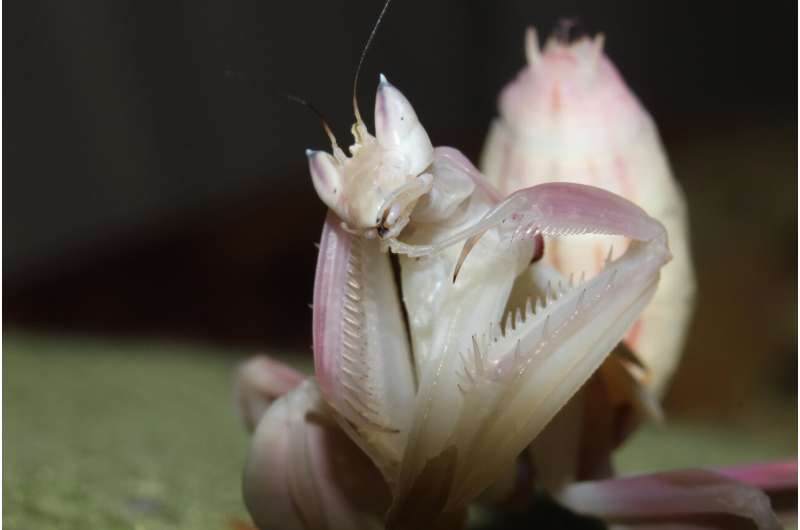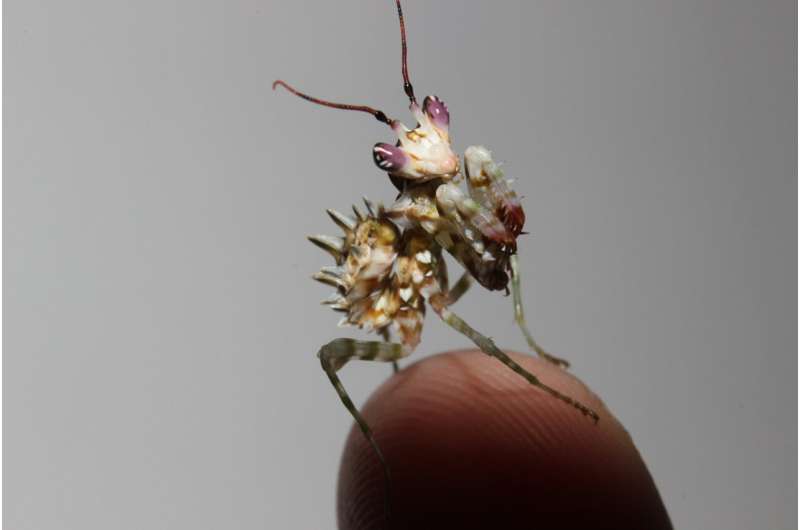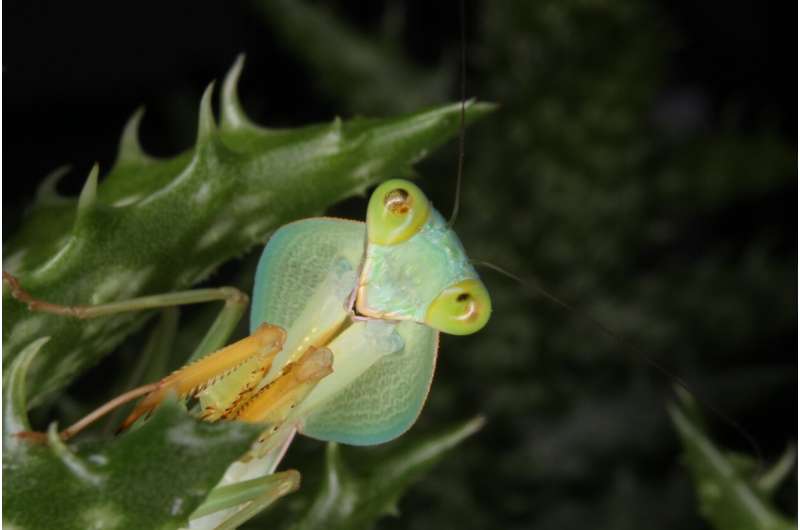The beautiful orchid mantis Hymenopus coronatus, one of the most requested on the market. Credit: William Di Pietro
Rearing insects at home as pets may sound strange and a bit nerdy, but thousands of people all over the world have already swapped their hamsters for praying mantises or stick insects.
These insects, sold at fairs and pet markets, or collected in the wild and then reared by amateurs or professionals, are gaining increased popularity and fueling a largely unknown market. Not all of them are small, crawling monsters. Some are elegant, with flower-like coloration (the orchid mantis, Hymenopus coronatus), and some are funny-looking like Pokémon (the jeweled flower mantis, Creobroter wahlbergii). Many can be safely manipulated and cuddled as they look at you with big, cute kitty-eyes (the giant shield mantis Rhombodera basalis).
When choosing a pet insect, people consider things such as shape, size, colors, and behaviors. They might also take into account how rare a certain species is, or how easy it is to look after. Looking at these preferences, Roberto Battiston of Museo di Archeologia e Scienze Naturali G. Zannato (Italy), William di Pietro of the World Biodiversity Association (Italy) and entomologist Kris Anderson (U.S.) published the first overview of the mantis pet market. Understanding how this market, still mostly unregulated, is changing, may be crucial to the conservation of rare species and promoting awareness of their habitat and place in the ecosystem.
A cute nymph of the Jeweled Flower Mantis Creobroter wahlbergii resting on the tip of a finger. Credit: William Di Pietro
A survey among almost 200 hobbyists, enthusiasts and professional sellers in the mantis community from 28 different countries showed that the targets of this market are indeed predictable. The typical mantis breeder or enthusiast, the study found, is 19 to 30 years old and buys mantises mostly out of personal curiosity or scientific interest. Willing to spend over $30 for a single individual, most people will prefer beautiful looking species over rare ones.
The research, published in the Journal of Orthoptera Research, identified buyers as "mostly curious enthusiasts with poor knowledge of the market dynamics and the laws behind it, even if they seem to generally care about their pet."
But the data also suggests the trade might not always be on the legal side, as "about one time out of four, the lack of permits or transparency from the seller is perceived from the buyer."
The Giant Shield Mantis Rhombodera basalis looking for a friend. Credit: William Di Pietro
A good collaboration between science and this large community may play a crucial role in the conservation of mantises in nature, the researchers point out.
Mantises, and in general, insects, are poorly known in terms of biology, distribution, and threats, with many species still unknown and waiting to be discovered. This is a big limit to their protection and conservation, since you cannot protect what you don't know.
"Hobbyists and pet insect enthusiasts are producing and sharing a huge quantity of observations on the biology and ecology of hundreds of species, even rare or still undescribed ones, a priceless heritage for the scientific community," the researchers conclude.
"Strengthening the dialogue between them, promoting a white market over a black one, may be a crucial help for the conservation of these insects, fundamental parts of the biodiversity of our planet, that are replacing our traditional pets at home."
More information: Roberto Battiston et al, The pet mantis market: a first overview on the praying mantis international trade (Insecta, Mantodea), Journal of Orthoptera Research (2022). DOI: 10.3897/jor.31.71458
Provided by Pensoft Publishers


























